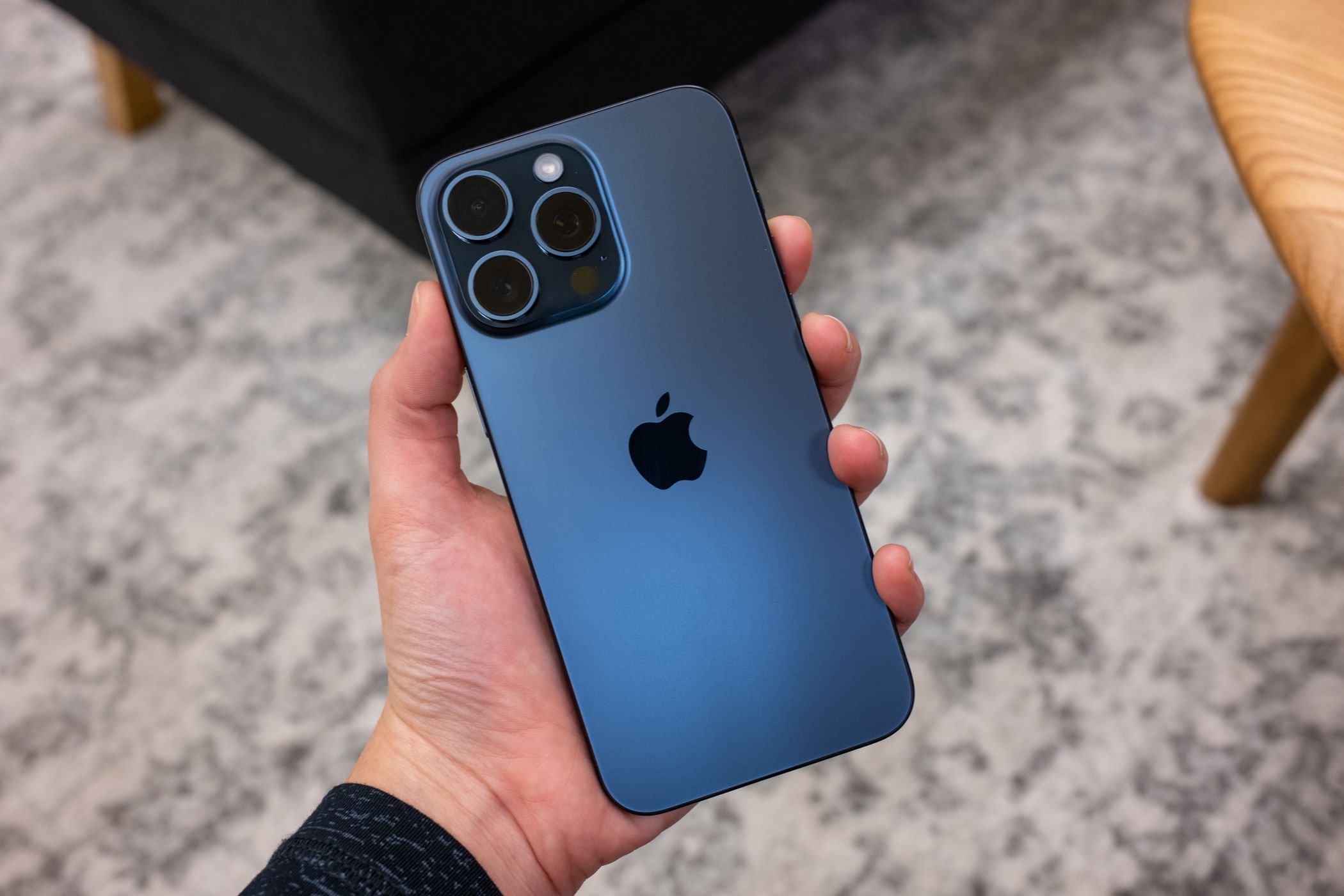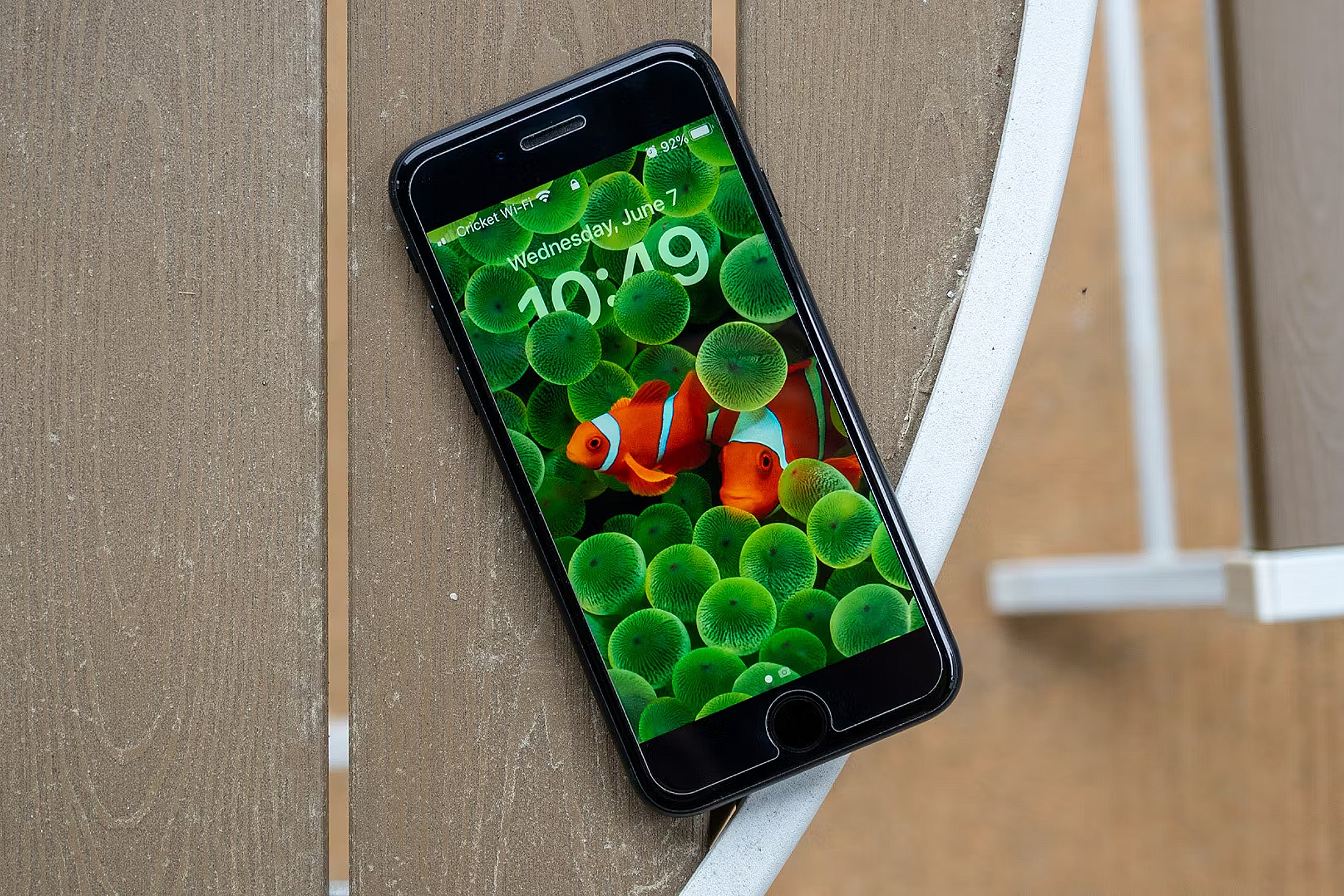
Why It's Time to Embrace Plastic over Titanium for Future iPhone Models

Why It’s Time to Embrace Plastic over Titanium for Future iPhone Models
Key Takeaways
- The titanium mid-frame of the iPhone 15 Pro is a marketing gimmick that focuses on weight reduction but doesn’t offer any other benefits.
- Plastic iPhones have been durable, affordable, and popular in the past, and using plastic housing for the next iPhone SE would be a smart move.
- While it’s unlikely that Apple will release a plastic iPhone due to its luxury image, it would be a great option for a budget model like the iPhone SE that offers modern features at an affordable price.
When I say “iPhone 15 Pro,” you say “titanium.” This awe-inspiring metal gives the iPhone 15 Pro a new shine, and it’s expected to become a staple of premium smartphone design. But you can keep your titanium. I just want a plastic iPhone.
The Titanium iPhone Is a Marketing Gimmick
At launch, the iPhone 15 Pro’s titanium mid-frame felt like nothing more than a footnote. This is the first iPhone with USB-C charging , it’s got a customizable “Action” button , and the Pro Max model comes with a new 5x telephoto lens. With all these great improvements, who cares about a thin piece of metal?
Well, as it turns out, everyone cares about the titanium mid-frame. It’s the iPhone 15 Pro’s headlining feature, and it’s the star of every iPhone 15 Pro advertisement. For those who complained about the weight of previous iPhone Pro models, this is a neat upgrade—titanium is lighter than steel, so the iPhone 15 Pro weighs 0.6 ounces (19g) less than the iPhone 14 Pro. It’s a small but noticeable reduction in weight.

Hannah Stryker / How-To Geek
But if weight reduction is the goal, Apple doesn’t need to use an expensive material like titanium. It could simply use anodized aluminum, just as it does in the standard iPhone 15. This model weighs about half an ounce (15g) less than its titanium Pro counterpart. Titanium doesn’t seem to offer any benefits beyond weight reduction. Durability tests by JerryRigEverything and AppleTrack show that this device isn’t any tougher than its predecessor (plus, if titanium made the phone more durable, Apple would brag about it).
The majority of iPhone 15 Pro advertisements don’t even mention weight. They just repeat the word “titanium” without any explanation, leaving customers to use their imagination and fill in the gaps. It’s an ingenious marketing tactic, but it’s also a bit toxic. We need an iPhone that’s more affordable and durable. Instead, Apple is doing the smartphone equivalent of gold-plated USB cables or magical audiophile equipment. “It’s premium, so it must be better!”
Give Me a Plastic iPhone!
From the start, Apple has intentionally made the iPhone a semi-affordable luxury item. This often comes at the expense of things that actually matter, such as usability or price. Just look at the iPhone 4. It introduced a flashy new design, but it suffered from cellular interference and had a fragile back panel. When customers complained, Steve Jobs accused them of using the phone wrong .
There have only been three plastic iPhones. First came the iPhone 3G, which used a plastic back panel (rather than the original aluminum shell) to reduce radio interference. It was the most popular phone in the United States, and its successor, the plastic-encased iPhone 3GS, enjoyed similar acclaim. Years later, the affordable iPhone 5c arrived with a plastic shell and outdid the iPhone 3G’s opening weekend threefold .

The plastic iPhones didn’t suffer from any weird engineering problems. They weren’t fragile; in fact, they were more durable than their aluminum or glass-backed counterparts. Critics may have compared the iPhone 5c to a cheap toy (it certainly looked like one), but they always complemented the quality and strength of Apple’s plastic, which was reinforced by an internal metal frame.
Aside from durability, the biggest benefit of a plastic phone is the cost. The iPhone 5c wasbasically identical to the iPhone 5, yet it was half the price. And oddly enough, that price reduction came with an improved battery life and upgraded selfie camera. Year-old components certainly helped, but the plastic shell also made a huge difference.
Admittedly, there are some downsides to plastic phone housing. Polycarbonate doesn’t dent or shatter, but it scratches easily. While plastic is technically lighter than anodized aluminum, it often requires some kind of metal reinforcement, which can offset any reduction in weight.
There are also environmental concerns associated with plastic. Obviously, you won’t win any “green” points for mining aluminum and other metals. But metal can be recycled indefinitely, and Apple CEO Tim Cook hopes to remove the mining process from its supply chain. If Apple can achieve this lofty goal and use 100% recycled metal in its products, I’ll gladly give up my dream of a plastic iPhone.
On the other hand, a circular supply chain will take years to develop. Samsung uses a ton of recycled plastic in its products, so why shouldn’t Apple?
The Next iPhone SE Is a Perfect Candidate for Plastic

Corbin Davenport / How-To Geek
It’s safe to assume that flagship iPhones will never use plastic housing. The iPhone 3G and 3GS were an exception to the rule, and Apple only made an exception because its original aluminum housing sucked the life out of cellular and Bluetooth signals.
In any case, customers would interpret a plastic iPhone 16 as a “downgrade,” so a budget model like the iPhone SE is our best candidate.
The third-generation iPhone SE retails at $480 but regularly goes on sale for around $400. It’s effectively half the price of a mainline iPhone, which is excellent value. But $400 is a lot of money for a phone that’s modeled after the six-year-old iPhone 8. While the iPhone SE is notable for its A15 Bionic chipset (which is also featured in the iPhone 14), the 4.7-inch screen, ancient camera hardware, and outdated design aren’t very appealing.
Small and outdated components are responsible for the iPhone SE’s low price. Still, it’s a luxurious piece of kit. It has an anodized aluminum frame and a glass back panel. My suggestion is to flip the script; Apple should model the fourth-generation iPhone SE after a modern device, but it should use plastic housing to achieve an affordable price.
Some people believe that the next iPhone SE should be based on the iPhone X. But I think that the iPhone 13 mini is a better option. It fits in the modern iPhone design language, its hardware is a few years old (but not outdated), and its small 5.42-inch screen is easy to differentiate from that of mainline iPhones. The iPhone 13 mini originally launched at $700, so if it’s retooled into a plastic iPhone SE, a price tag under $500 won’t be unreasonable.
Will Apple capitulate and sell a plastic iPhone? The answer is probably a big fat “no.” Customers are convinced that cheapness is bad and nothing’s cheaper than plastic. This attitude, which Apple has reinforced, goes against the iPhone’s luxurious image. But I’m allowed to dream.
Also read:
- [New] 2024 Approved Master the Art of Hulu Screen Capturing Windows, Mac & Mobile Edition
- [Updated] Garmin's Ultra 30 Camera Unveiled A Comprehensive Guide
- 2024 Approved PowerPoint Presentation Soundtracking Secrets
- Adopting a Global Communication Lifestyle in '24
- Affordable Flying Experience with the SYMA X5C Ready-to-Fly Quadcopter Reviewed
- Daily Assistant Showdown: Claude Vs. ChatGPT - Which One Reigns Supreme?
- Date Set! Apple's Anticipated iPhone 15 Reveal Is Officially Scheduled for [Insert Event Date]
- Discover Hidden Gems: Explore These 10 Impressive iPad Tricks for Enhanced Productivity and Fun
- Discover How Live Picture Lock Screens Can Transform Your iPhone Experience – A Game-Changing Oversight!
- Discover the Hidden Gems: IOS 17'S Top Ten Upgrades Revealed
- Embracing the Future with My Magneatic Phone Wallet: Top Reasons That Have Changed Everything
- Enhance iPad Experience: Let's Focus on Functionality, Not Diminishing Its Size
- Explore Enhanced Capabilities in iPhone 15 Pro with Action Buttons and USB Type-C Ports
- How and Where to Find a Shiny Stone Pokémon For Vivo Y78+? | Dr.fone
- In 2024, Navigating Instagram for Podcast Promotion
- Resolve Game Installation Errors with Our Origin Games Step-by-Step Tutorial
- Upscaling Your YouTube Visuals for 2024
- Title: Why It's Time to Embrace Plastic over Titanium for Future iPhone Models
- Author: Daniel
- Created at : 2024-09-24 09:51:46
- Updated at : 2024-10-01 04:13:09
- Link: https://os-tips.techidaily.com/why-its-time-to-embrace-plastic-over-titanium-for-future-iphone-models/
- License: This work is licensed under CC BY-NC-SA 4.0.